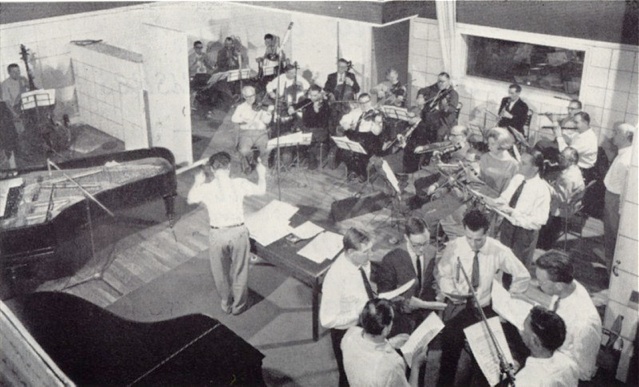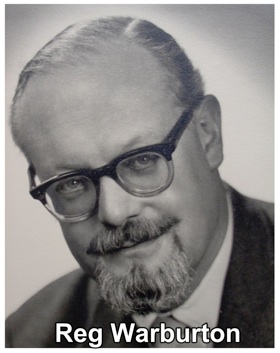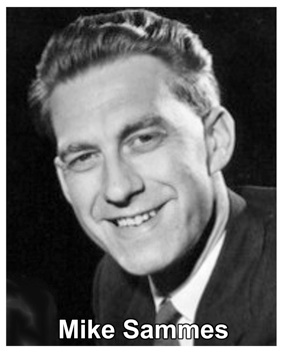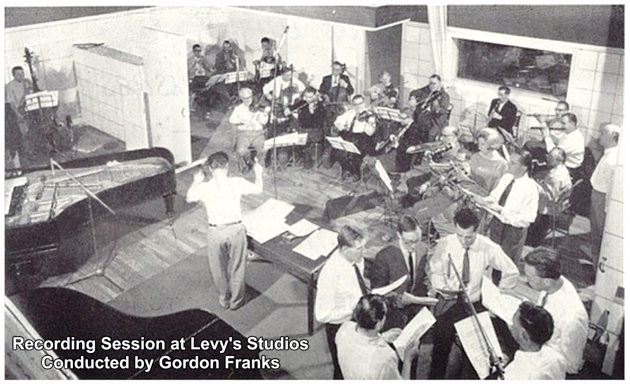Embassy Records
IT’S THE LABEL THAT’S THE STAR!

Embassy Records
IT’S THE LABEL THAT’S THE STAR!

Embassy recordings were cover records produced by Oriole Records and marketed by Woolworths. Oriole was almost unique outside the large major labels in owning its own sound studios as well as its own pressing and manufacturing plants. MORRIS LEVY ran the business side while his brother JACQUES LEVY (always pronounced “Jakes” or “Mister Jakes”) was responsible for the technical recording side.
In the late ’50’s and early 60’s, around one in twenty of all pop singles sold in the UK were on the Embassy label. With guaranteed distribution through Woolworth’s nation-wide network of stores, each release would sell in the tens of thousands.
And if they had been included in the official Hit Parade, every week would have seen several Embassy singles in the nation’s Top 30.
Today, those old Embassy singles are very collectable. Partly because it is the only UK label to include virtually all the 1200 songs that were hits between 1955 and 1965, but also because its cheery little maroon label brings back nostalgic memories to the many thousands of families whose record collections would have included at least a few Embassies.
The musicians used were the among the very best on the London session scene and becoming a regular on Embassy was a role highly sought after. GORDON FRANKS was the musical director on most of the Embassy sessions in the 1960’s and the label would not have been the success it was without the regular participation of Britain’s premier backing group, the MIKE SAMMES SINGERS.
The rear view of the musical director conducting the recording session in the picture above is almost certainly that of Gordon Franks. The backing singers standing in a group at the bottom right hand corner of the picture are definitely the Mike Sammes Singers. Three of them are stalwarts who were on literally hundreds of Embassy sessions. Going clockwise: Mel Todd is the one in the dark jacket and glasses. He was either American or Canadian. Don’t know the guy on his left, but Mike Sammes himself is the next one. Again. don’t know the guy on Mike’s left but the next one is Ross Gilmour; he was Scottish.
The economics of producing Embassy records to sell at such a competitive price meant that a three hour recording session had to produce four different tracks. And that three hours included time for the musicians to bring in their instruments, unpack them and set them up ... plus the recording engineer doing all the sound balancing before each track ... plus the mandatory Musician’s Union tea/coffee break during which the musicians would rush out and move their cars and feed the parking meters in the square behind the studio just off London’s busy Bond Street. This in turn meant that there was effectively less than 30 minutes available to actually record each song. And if the lead singer on the track wasn’t able to get a good recording in the can within a small number of “takes”, they would be extremely unpopular. Especially if it resulted in the session over-running the allotted three hours, which meant that the musicians had to be paid an extra fee.
REG WARBURTON was A&R man for Oriole/Embassy from 1957 to 1965. Following a successful career as musical director to stars such as David Whitfield, Reg built up around him a “family” of about a dozen highly professional singers who could be relied on to give polished performances on whatever song they were required to record at literally a couple of day’s notice. Singers weren’t auditioned to join Embassy ... they were INVITED, based on their reputation. So they tended to be experienced singers with big bands who regularly broadcast live on BBC radio ... where of course they had to do a song live in one take!
RAY PILGRIM had been broadcasting weekly on the BBC’s “Go Man Go” programme since December 1958, so would already have been well known to Reg. But the event that triggered Ray’s long relationship with Oriole/Embassy happened in December 1959 when Ray, during his college vacation, decided to try his hand at writing his first song which was “Little Christine”. This was immediately snapped up by Oriole for Dick Jordan to record. At the same time Reg invited Ray to come in and discuss signing for Oriole himself and also to start recording for Embassy. So starting a relationship that lasted until the very last Embassy session five years later, by which time Ray was firmly established in his “proper job” and finding it increasingly difficult to fit in the recording sessions.
Initially, for contractual reasons, Ray had to adopt a pseudonym for the Embassy recordings. So the “Bobby Stevens” name was simply plucked out of the air with no rhyme or reason behind it. But it didn’t really fool the radio listeners who often heard him singing exactly the same songs on the air as he was recording for Embassy. In Autumn 1962, after graduating from the London School of Economics and joining the fledgling IT industry, he was able to use the Pilgrim name for Embassy. But in early 1963 the pseudonyms returned as he sang lead on many of the Typhoons, Jaybirds, and Starlings tracks.
FOREIGN RELEASES: It was not generally known at the time that the Embassy recordings, primarily destined for sale in Woolworths in the UK, were also licenced for release on many other labels in many other countries around the world.
The advent of the internet and eBay has made this much more visible. At last count there were over 40 different labels in about 25 different countries that released Embassy tracks. If you click on the “Discography” link at the top of this page you can link to a list of the currently known foreign releases containing Ray’s tracks. And that’s just his recordings. The recordings of the full Embassy family would amount to many more.
In 1964, Embassy’s parent company, Oriole was taken over by CBS (now part of SONY) and the very last Embassy covers session was on July 26th 1965, which included Ray singing “Wooly Bully” and “Help!”. So that was the end of an era for the cheery little maroon label, an era which lasted from 1954 to 1965 during which time Embassy covered around 1200 hits of the day, providing a unique commentary on the period of greatest change in modern popular music and particularly in British popular music.
______________________________
Once when being interviewed about his memories as one of the label’s stars,
Embassy veteran Ray Pilgrim replied:
We didn’t regard ourselves as stars; we were just professionals.
IT WAS THE LABEL THAT WAS THE STAR!
Which just about sums all it up!
“A RECORDING SESSION IN PROGRESS”
This picture illustrated an article by Morris Levy in the Woolworth’s staff magazine “The New Bond” around 1963.


And see much, much more at Paul Seaton’s WoolworthMuseum website
and at John Adam’s www.embassyrecords.co.uk website
“As 1959 took off with the national exposure on Go Man Go and Saturday Club, I got approached to sign record deals with a couple of the major labels. But they involved “management” strings which I didn’t want and would have involved touring around singing the same five or six songs every night for months on end. Which would have been nowhere near as enjoyable as being with the Rabin Orchestra. And besides which, was totally incompatible with my London-based University plans. The opportunity with Oriole fitted much better. And the real jewel in the Oriole crown was Embassy! So started a great relationship which meant I could record new songs every month for over five years.
I look back on those years with great affection and with great pride in what we achieved at Embassy.”
(Ray Pilgrim)


